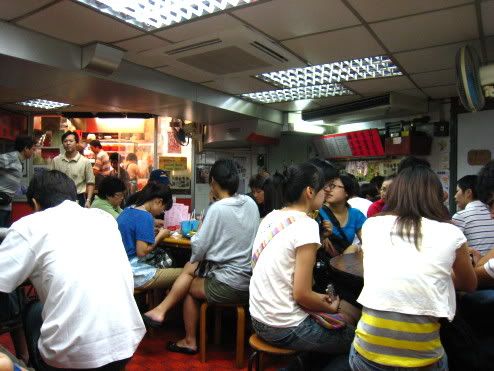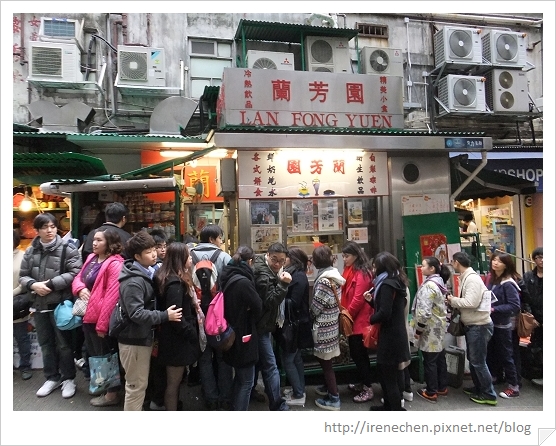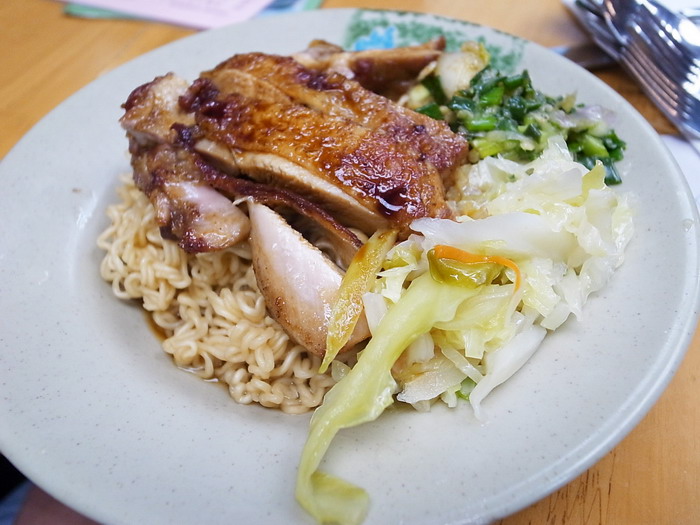Authentic Restaurants in Hong Kong
With the modernization of
restaurants in Hong Kong , more restaurants are located in large shopping mall
with huge dinning areas , the ordering and paying process become more
convenient , like using Ipad for ordering and providing different kinds of
payment methods like VISA/MASTER/American Express/EPS/Cash.etc
(Ipad ordering in Itacho Sushi Restaurant)
However , there are still a group of local , typical , authentic restaurants locating in streets of Hong Kong , they are tiny , traditional , and look-like-normal , but they are still welcomed by many of the citizens today.
( LAN FONG YUEN )
It is located in Central and you can see the traditional old-Hong Kong-style decoration , it is looked like in 1980s , the traditional style make it more attractive in Today's Hong Kong , which made it become one of the trousist spots for foreigners.
(SUN KEE Spicy Noodles in Causeway Bay)
The dining area of these restaurants is tiny , in most of the time , you will have to share a table with other dining customers and you can only occupy a little area of space.
However, in most of the time , you will find it difficult to enter the restaurants because there is often a long queue outside the restaurants.
The menus of these restaurants are very old-fashioned and typical ,every food has its fixed price, it is using self-assisted ordering system , you can circle the food you want by using the pen provided on the table and this will also be your bill when your make payment.In most of cases , only cash will be accepted in payment because it is too difficult to handle card payment in such busy envrionment with such many customers.
Why they are famous?
You may have a question that why they can survive in today's Hong Kong with high rental and operation costs and not attractive dining areas and environments , the answers is a “secret”.
It is because every authentic restaurant has its own famous , unique attractiveness in terms of food.
For example , SUN KEE is famous because of its unique spicy sauce , it attracts many customers who in favor of the taste of spicy.
LAN FONG YUEN is famous because of its milk tea , creamy toast and its stirred noodles. It attracts many customers who want to try the real "Hong Kong" taste.
Chain and Independent Restaurants
Chain restaurant
2) The
chain restaurants may adopt the regular menus are usually adopted by chain
restaurants, take Tam Chai Yunna Noodles
Restaurant as an example, to control the operation cost effectively, it chooses
to offer the same sets of meal to customers. Also, it is useful to keep
consistent quality of food among branches.
3) The owner of Chain restaurants are most likely large
companies or entrepreneurs. Some stores are owned by the company but the
majority is franchised by territory. These restaurants have much more
experience, cash flow to support the business operation. The marketing
promotion by the owner can also be enjoyed by the franchisees. Also, they can
enjoy the operation skills and equipment support from the franchisor.
Independent
restaurant
2) Flexible
menus are usually adopted by independent restaurants. Independent restaurants
can estimate or forecast the demand of meal in order to adjust the menu. It can
be changed according to the supply of ingredients. Hence, customers will have
more choices.'
3) The owners of chain restaurants are most like large companies and entrepreneurs. They had more experience and cash flow.
Authentic Restaurants in Hong Kong
(Ipad ordering in Itacho Sushi Restaurant)
Chain and Independent Restaurants
2) Flexible menus are usually adopted by independent restaurants. Independent restaurants can estimate or forecast the demand of meal in order to adjust the menu. It can be changed according to the supply of ingredients. Hence, customers will have more choices.'
3) The owners of chain restaurants are most like large companies and entrepreneurs. They had more experience and cash flow.
Real Life Examples of Individual Restaurant
 |
| Texas Burger |
 |
| HeSheEat |
 |
| The News Room Diner |
Real Life Examples of Chain Restaurant
 |
| School Food |
 |
| McDonald's |
 |
| KFC |
Local Trends and Practices about Restaurant Business
- Hong Kong people are always busy. Nowadays many restaurants will provide free Wi-Fi to customers, therefore, they can surf anytime to do their work and check e-mail when they have meal in the restaurant. It can save their time.
- Unlike those traditional restaurants, restaurant nowadays will provide tea time, brunch time or even mid-night time to customers. It usually costs customer less in these sections. Therefore, it can target some low-income group customers.
- The working hour of restaurants in Hong Kong becomes longer. For example, many McDonalds’ in Hong Kong are opening in 24 hours. Customers can have meal outsides anytime.
- Hong Kong restaurants provide an unlimited variety of food in every class. For example, Japanese, Thai and Italian food.
- Hong Kong’s food culture is ‘fresh’. Consumers’ preference for fresh and live products due to tradition, as sell as concern about food safety. Therefore, many restaurants use healthy food or drinks as their selling point.
- Thisis the new fact of dining out in Hong Kong: everyone’s a critic. Openrice, HongKong’s online home of user-generated restaurant reviews, offering in-depthreviews of everything from the decor to the service. People always go Openrice to do research before going to a new restaurant.
- There are a lot of frozen yogurt shops everywhere. People like eating dessert, but they always afraid to get fat. Yogurt is healthy and delicious, as a result, yogurt shops become popular and especially welcomed by ladies.
- Some restaurants now can have online reservation. People can book a table through internet or Apps. It is very convenience for customers especially when the hotline for reservation is always busy.
Reference:
1. http://www.travelebc.com/list-of-attractions-china.html
2.http://www.yelp.com/list/a-taste-of-hong-kong-around-the-bay-area-millbrae-2
























.jpg)









